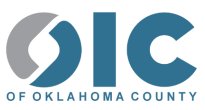How to Tell a Compelling Story
by DesJean Jones

At OIC (Opportunities Industrialization Center of Oklahoma County), we applied for and won a competitive grant of $250,000.
When we first heard about the grant, we had already missed every information session, every meeting, and every supplemental packet available where the grant providers make sure you know how to apply for the grant. But we applied anyway, because it was a quarter of a million dollars.
As we set about applying for the grant, we focused on telling them the story we know to be true about our organization.
We didn’t really know what they were looking for in the application, but we knew the faces of the students whose lives we had changed. We know the face of a grandparent learning to read and the face of a business owner who had been hiding the fact that they didn’t finish high school. We knew their faces when they accomplished the goal before them.
Applying for a grant—or a request for proposal or sales pitch or any similar situation in business—is really about telling a compelling story. Storytelling is a big deal. It’s a big deal when you do it face to face, and it’s an even bigger deal when you do it in the written word.
So how do you do that? Here are three elements of a compelling story.
Audience
Who are you talking to? When you think about your audience, make sure you’re speaking the language they will understand. When we applied for this grant, we knew exactly who we were talking to—people who wanted to support organizations who could move the needle on adult education. We knew what story they needed and wanted to hear
Authenticity
Authenticity adds depth to your story. If you went out and tried to tell someone else’s story, it might feel a little like wearing someone else’s shoes or jacket. But if you’re telling your own story, you know it.
When I talk about OIC and the work we do that impacts lives every single day, I could go on and on. With your business and your story, it needs to be authentic. Who are you and what are you trying to accomplish? Why do you do what you do? Get to what’s real about your business.
Alteration
For alteration, you have to tell the reader something they don’t know. Give them some information that’s going to stop them and alter their decision process. When you tell a story the right way and give them information they didn’t have before, you can shift how they make a decision.
For us during the grant process, that meant showing them how we restore individuals first and then educate them. It’s a very compelling part of our story—that we focus on restoring human beings first. Nobody can tell that better than we can.
Before you can tell a compelling story though, you need some compelling answers. Ask yourself these questions.
- What do you do? Really. What do you really do?
- What distinguishes you from everyone else?
- What is your “right now” market? Who aren’t you reaching? Why not?
With honest answers to these questions, you can begin telling a compelling story about your organization, whether for the purposes of grant funding or sales. And keep in mind that telling a story is a lot like telling a joke—you need to tell it in the right order so people can go along with you on that story.
